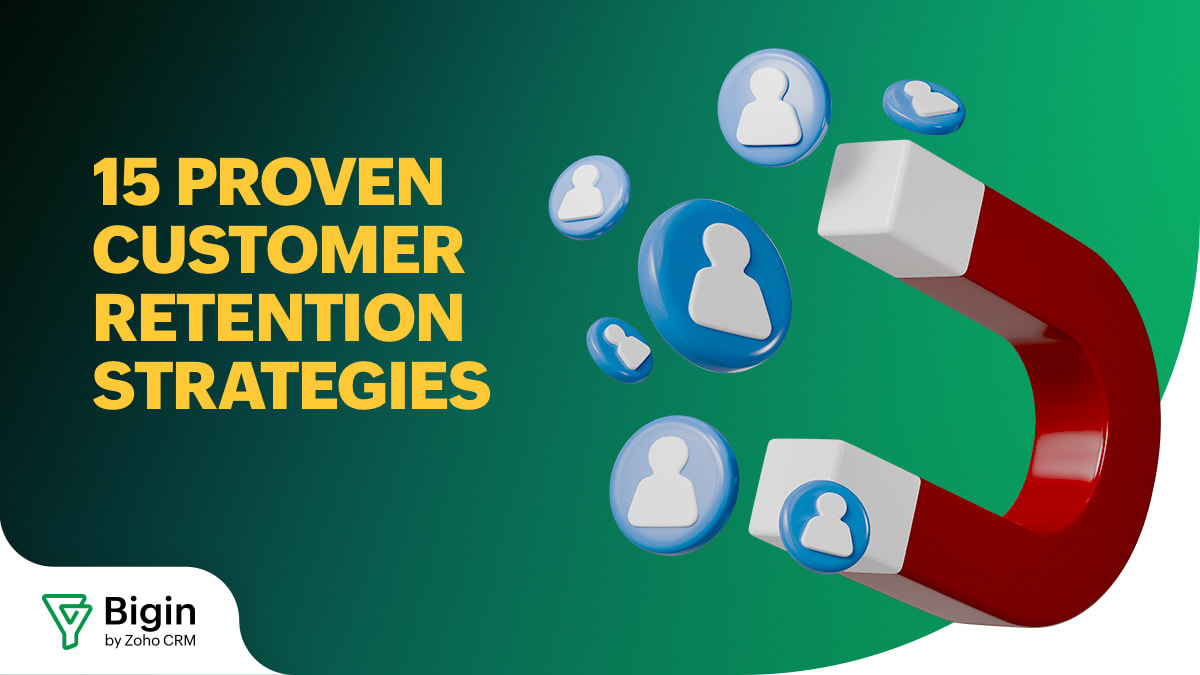10 best practices for driving customer advocacy through community building
- Published : April 22, 2025
- Last Updated : April 22, 2025
- 15 Views
- 7 Min Read

Once a customer hits "buy," the real work begins. Retaining their trust, helping them succeed with your product, and encouraging long-term loyalty often depends on what happens after the transaction.
A strong customer community can make a big difference by bringing your users into a shared space where they can connect with each other, learn, give feedback, and feel part of something bigger. For business owners, it can improve retention, reduce support costs, and even spark organic growth through referrals.
But building a customer community requires intention. You need the right goals, the right environment, and a clear understanding of what your customers want from the space. This guide covers ten best practices that can help you create a community that’s active, valuable, and aligned with your business. First, let's understand what customer advocacy means.
What is customer advocacy?
Strong customer communities give people a reason to care about your brand long after the sale. When customers feel included, supported, and empowered within a community, they’re more likely to speak up about their experiences. That might show up as referrals, social media shout-outs, thoughtful reviews, or even contributions to your help docs or events.
Advocacy grows in environments where people feel seen and valued. A customer who once asked a question in your forum might come back to answer someone else’s. A user who shared feedback early on might become a trusted voice in product betas. These actions reflect a shift in behavior: Customers begin to take initiative, offer support to others, and speak up on your behalf.
You can’t force advocacy, but you can create the conditions for it. A good community makes that possible by encouraging authentic connections between customers and your team. Over time, this builds a sense of shared ownership—the kind that’s hard to replicate through traditional marketing.
A customer community, when nurtured well, becomes more than a support channel. It's where future advocates start to take shape, often without being asked. So with that in mind, let’s take a look at 10 best practices for creating a customer community that will boost retention, strengthen loyalty, and turn satisfied users into passionate advocates.
10 best practices for building customer advocacy
1. Know why your community exists
Before creating a group or setting up a platform, identify your purpose clearly. What role will the community play in your customer journey?
You might want to:
Help customers use your product more effectively.
Offer early access to features, events, or resources.
Gather honest feedback and suggestions.
Encourage peer-to-peer support and knowledge sharing.
Having a focused goal helps you shape your content, tone, and even the kind of people you invite in. Without this clarity, the community can easily become inactive or unfocused.
Pro tip: Create a simple mission statement for your community and pin it as your welcome message. It sets expectations right away and helps select for members who have the right mindset going in.
2. Invite your most loyal customers first
Communities rarely take off without a few people who already care. Start by reaching out to the customers who are most engaged: the folks who leave detailed feedback, attend webinars, or regularly interact with your brand.
Send personal invitations and let them know you’re building something just for them. Position it as a space where they can get more value, connect with others, and have a say in what’s next.
Remember, keeping this initial group small helps you test what works and build early momentum.
Pro tip: Offer founding members a small incentive. It could be a badge, exclusive access, or a spotlight feature for joining early. This adds perceived value and gives them a reason to stay engaged as the community grows.
3. Choose the right space and structure
Your community platform should match your audience’s behavior and expectations. For some businesses, a private Slack group works well. Others might benefit from a Facebook group, a subreddit, or a forum inside the product.
What matters is that the space is easy to use and aligned with how your customers prefer to engage.
Along with choosing the right platform, think about structure. Are there channels for different topics? Is there a clear welcome area for new members? Can people find resources without having to scroll endlessly?
The easier it is to navigate, the more likely people are to come back.
Pro tip: Run a short poll or survey asking customers where they’d prefer to engage (Reddit, WhatsApp, forums, etc.) before setting anything up. Choosing the right space is less about your tools and more about their habits.
4. Focus on utility over hype
A community doesn’t have to be noisy to be useful. Instead of trying to generate constant chatter, think about how the space can deliver practical value.
This might include:
Product tutorials or walkthroughs
Customer-led discussions or showcases
Behind-the-scenes updates or feature previews
Office hours or live Q&A sessions with your team
Give members a reason to check in regularly, especially if it helps them use your product more effectively or feel part of a growing customer network.
Pro tip: Build a searchable resource library within your community that includes FAQs, templates, checklists, or customer-sourced how-tos. Content that solves problems tends to keep people coming back more than generic discussions. For example, take a look at Bigin's Community.
5. Appoint someone to lead the community
Every community needs a steady hand guiding it forward. This could be a community manager, a member of your customer success team, or even power users who are willing to take on more active roles.
Their job is to:
Welcome new members.
Prompt discussion when things go quiet.
Share updates, resources, or behind-the-scenes content.
Make sure conversations stay respectful and on track.
Even if you’re keeping the structure loose, people need to feel that someone is present and paying attention. That sense of stewardship helps build trust.
Pro tip: Rotate community leadership occasionally by giving power users the chance to host Q&As, share their setups, or run themed weeks. This creates ownership without always relying on your internal team.
6. Make it easy to participate
Many customers won’t post in a community unless they feel confident they’ll be heard or helped. So remove as much friction as possible.
You can:
Ask specific, low-stakes questions.
Run polls to invite quick input.
Feature member stories or wins to spark conversations.
Highlight great answers or discussions from others.
A good rule of thumb: Don’t expect people to contribute unless you’ve already modeled the kind of behavior you want to see.
Also, don’t punish lurking. Not everyone will comment, but they might still read, learn, and gain value from the space.
Pro tip: Use themed conversation starters like “Tool Tuesdays” (which discusses community-favorite tools), “Win Wednesdays” (which feature customer success stories), or “Ask Me Anything Fridays.” Recurring formats build familiarity and reduce hesitation.
7. Spotlight your customers
If your community is built for customers, they should feel like the main characters.
Celebrate them when they:
Achieve great results using your product.
Help others in the community.
Share useful insights or examples.
This could be as simple as a “Customer of the Month” post, a small feature in your newsletter, or a comment acknowledging their input. These small moments of recognition can turn passive users into proud contributors.
Pro tip: Create a community wall of fame or monthly shoutouts where you highlight top contributors, creative use cases, or success stories. Bonus points if you pair it with a handwritten note or a small gift!
8. Use your community as a feedback loop
Customer communities are super useful for gathering insights if you actively listen.
You’ll start to notice patterns: repeated questions, feature requests, or points of confusion. These are valuable data points. Use them to shape your product roadmap, create better help docs, or refine your messaging.
When you act on community feedback, let people know. It shows you’re paying attention and makes them feel more invested in your growth.
Pro tip: Set up a “What should we build next?” thread or board where customers can vote on ideas. If something gets implemented, tag the original contributor.
9. Keep the tone human and on-brand
Look, no one wants to feel like they’ve joined a support group run by a chatbot. Let your brand voice carry into the community. Whether that’s friendly and quirky or straightforward and helpful.
Talk like a real person. Use names, emojis, questions, humor—whatever fits your brand. It should feel like a casual meetup, not a company bulletin board.
Also, be transparent. If you’re experimenting with something new, say so. If you don’t have an answer yet, be honest. Openness builds goodwill.
Pro tip: Record a short welcome video from your founder or team and pin it at the top. Seeing a real face builds connection fast, and it sets a personal tone from the start.
10. Keep evolving with your members
Communities aren’t static. As your business grows and your customer base shifts, your community might need new channels, formats, or experiences.
Maybe what started as a help group becomes more of a peer learning network. Or maybe your community outgrows one platform and needs a more structured space.
Check in with members regularly. Ask what they’re enjoying, what they’d like more of, and what’s missing. Their needs should guide how the space evolves.
Pro tip: Do a quarterly “State of the Community” post or survey asking what’s working and what needs to change. Share results openly. It will make members feel involved in steering the ship.
Communities don’t grow overnight
The most active communities aren’t always the loudest. They’re the ones where people return because it helps them get better at what they do; where customers start offering help before you step in; where product feedback feels like collaboration, not complaining. That’s where advocacy lives: not in a campaign, but in everyday interactions.
If you're just starting out, focus on doing a few things well: Know your purpose, keep things personal, and always, always listen. Communities don’t grow overnight. But with the right intent and a bit of consistency, they become one of the most valuable assets in your customer success strategy.
When customers trust your product and feel a genuine connection to your team, they’re far more likely to contribute, recommend, and grow with you. Not because they’re asked to, but because they want to.
 Anubhav
AnubhavAnubhav is a product marketer with an insatiable thirst for all things content marketing, technology, and SaaS. His expertise lies in crafting compelling narratives that resonate with audiences and drive business growth. With a deep-rooted interest in entrepreneurship, Anubhav closely follows the latest industry trends and innovations, constantly seeking new ways to elevate marketing strategies.


